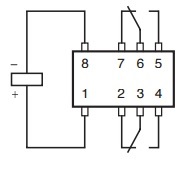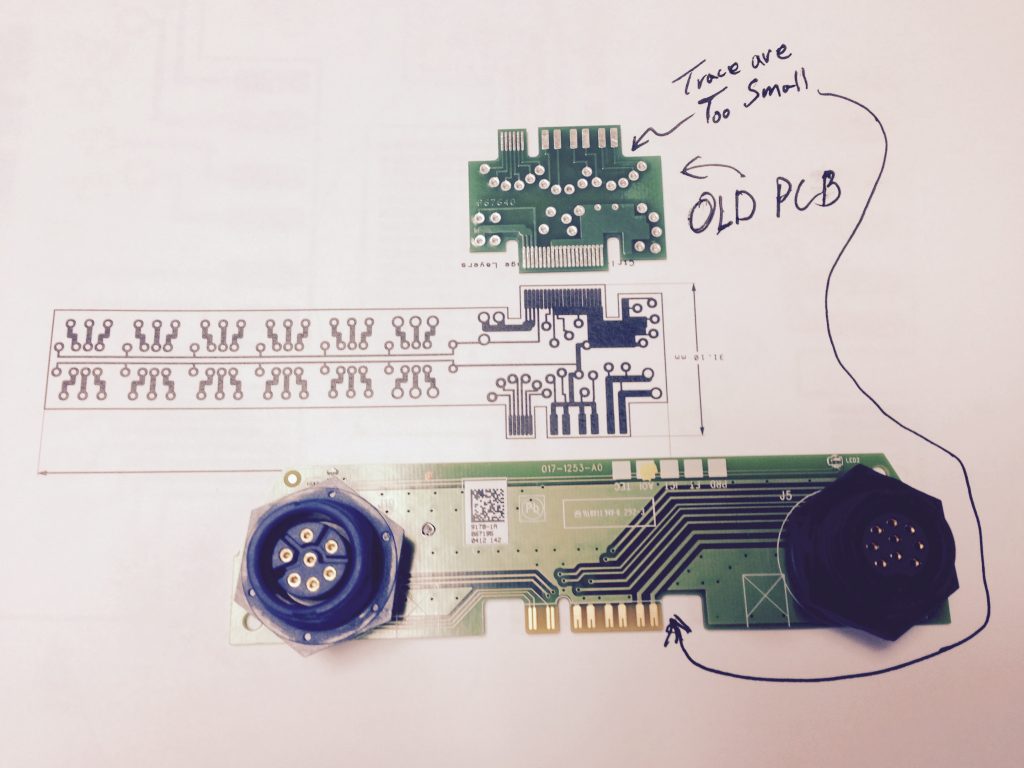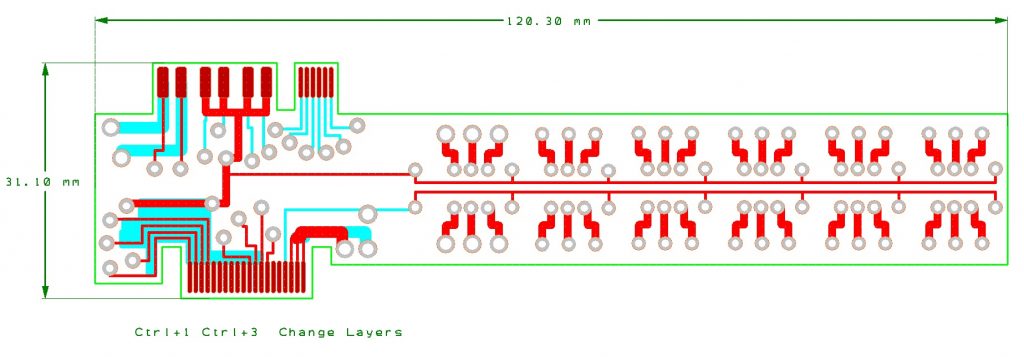Sonar’s come in three varieties.
Sounders that measure the distance to the bottom like Tritech’s MicroSounder for $3,069. Scanning sonars which sweep from side to side to reveal the terrain ahead or in 360 degees like a weather radar to display everything surrounding the ROV like Fisher’s Scan 360 for $7000, and finally Side Scan with displays the ocean floor to boths sides as it is towed behind a boat. A low end side scan sonar like SportScan will cost $5000. All together the sounder, scanning sonar, and side scan sonar would cost a over $15,0000.
The idea we want to explore is adapting off the fish finder technology for deep water exploration. In the US, recreational fishing is a multi-billion dollar industry, and that money has driven Humminbird and Lowrance the top two makers of fish finders to radically improve their equipment of the years so that both now offer all three sonar technologies as part of their product lines.
This resource has been ignored by the science and hobby ROV communities because this equipment typically has relatively short cables distances between the transducer which sits in the water and the display console that interprets the signal from the transducer and displays for the angler. However Lowrance opted for a three component system. The transducer connects to a black box where the signal is processed and then transmitted via common Ethernet to one or more display terminals. This opens the door for placing the transducer on an ROV and the black box inside the ROV. The Ethernet signal can then be carried over 1K on a a single 23 awg twisted pair using VDSL2.

SpotlightScan transducer & Ethernet SonarHub Width 7.1 in (180 mm), Height 2.2 in (57 mm) Weight 1.5 lbs, Power 9-32 vDC min-max Max .8A at 13.8 v Sonar Hub Specs pdf
SpotlightScan transducer & Ethernet SonarHub
Width 7.1 in (180 mm), Height 2.2 in (57 mm)
Weight 1.5 lbs, Power 9-32 vDC min-max
Max .8A at 13.8 v Sonar Hub Specs pdf
Lowrance offers two options for the transducers – the StructureScan which is a side scan transducer and the SpotlightScan which is a scanning sonar. The SpotlightScan transducer is dual frequency 455 khz for 150 ft range and 800khz for more detail under 100ft. The SpotlightScan is ideal for approaching a target when it’s approximate location is known. StructureScan is more capable for covering a search grid. The specifications for this project calls for visually inspecting a target that was located by a separate side scan unit, so StructureScan will best fulfill the requirement.
The SonarHub works with both units but only one transducer can be connected to the SonarHub, as the SpotlightScan six conductor twisted paired cable from the transducer splits and connects to both transducer ports on the SonarHub. To operate both StructurScan and SpotlightScan at the same time requires two SonarHubs. Alternatively the StructureScan transducer could be supported by an LLS-2 which is the predecessor to the SonarHub.
The SonarHub would be housed inside the ROV and connect to the ROV’s Ethernet network via a 10/100 Ethernet switch along with four full HD IP cameras and a VDSL2 transceiver that connect to the surfice vessel. Top side, the receiving VDSL2 transceiver would connect to second 10/100 Ethernet switch with connections to the controlling laptop computer and the Lawrence Gen2 display unit. Sonar Hub Specs pdf

HDS-7 Gen2 Touch $1000
Width 8.44″, Depth 3.24″, Height 5.76″
12 W (0.9 A @ 13 V DC) Specs

The SpotlightScan transducer which will be made available in February 2014 together with the Sonar hub sells for about $1000
An HDS-5 ( 5 inch ) Gen 2 display cost $650. So for less than $2000 we have a scanning sonar.
Larger displays with touch screens are available. The HDS-7 Gen2 Touch , is a 7 inch display for $1000.
For $200, a GoFree Wireless module can be added to any HDS Gen 2 or Touch display to allows the screen view to be shared with multiple iPad tablets. When connected to a HDS Gen2 Touch devices the iPad can both view and control.

Lowrance GoFree WiFi shares the display with
iPad or Galaxy tablets. $200

NMEA 2000 trolling motor foot control sensor

NMEA 2000 Starter Kit $70

Numerous modifications and test will need make to transition the equipment to a deep sea ROV but a successful effort will mean the proliferation of sonar exploration equipment leading to the discovery and survey of more of the worlds ancient archeology before it is destroyed by the forces of nature and bottom trawling.
The SpotlightScan sonar is designed to mount onto a trolling motor which is rotated by a foot pedal. In order to process the image from the transducer the display unit also requires input from a position sensor mounted on the foot controller. This position sensor is connected to the display by a NMEA 2000 network. Rotating the transducer without the position sensor or moving the vessel forward will not produce a useable image. The trolling motor foot control sensor must be actuated proportional to movement of the SpotlightScan transducer. The boat can be making headway at less than 2 knots while the transducer is being swept, but the movement will degrade the image. Sweeping the transducer slower produces higher quality images. A 30 degree sweep should be done in about 6 seconds. The SpotlightScan transducer is composed of two narrow vertical beams separated by a 30 degrees, so a 30 degrees rotation of the transducer covers 60 degrees of the bottom. At a range of 100 feet the 60 degree cone will cover a 100 foot wide swath of the bottom.
Because the trolling motor foot control sensor utilizes NMEA 2000 it’s functions is best replicated on the surface vessel, near the display console. This can be done using Arduino controllers. One Ethernet connected Arduino on the ROV will use a stepper motor controller to rotate the SpotScan transducer with an oil compensated Nema 17 stepper motor, while another Arduino controller near the HDS touch console mimics the movement of the foot pedal either with a signal from an analog output port or by mechanically moving the foot control sensor with a servo that operates in proper proportion with the rotation of the stepper motor moving the transducer.
Spotlight Scan.pdf
Cable from the transducer is 22 AWG twisted pair for each channel. Each channel is wrapped in its own shield. There is also an outer shield for the cable.
Wiring Lowrance Ethernet to standard Cat5
| Lowrance | Standard Cat5 | |||
| Pin | Type | Color | Color | Position from left in Cat5 connector with the clip away from you. |
| 1 | TX+ | White/Orange | White/Green | 3 |
| 2 | TX- | Orange | Green | 6 |
| 3 | RX+ | White/Blue | White/Orange | 1 |
| 4 | RX- | Blue | Orange | 2 |
| 5 | Drain | braid | none | |
https://svseeker.com/images/Open_Source_Towed_Sonar_ROV/Ethernet%20pinout.JPG

Lowrance Ethernet Pinout, Back of plug view.

Drew Morgan used PCB Artist available from www.4pcb.com to generate a two sided PCB board that when cut in half will replace the cable plug in port cards provided with the Lowrance SonarHub. The new cards have a low profile that will fit inside the SornarHub housing and make it easy to solder the wiring harness directly to card.
We had and electrical arcing problem in the first SonarHub interface board and are correcting that in the most recent version by making the paths larger with with larger holes in the pads for the larger wire gauge. And we added the relay back as well a it cost only a little more do so.



